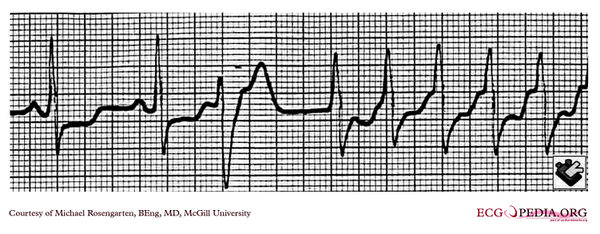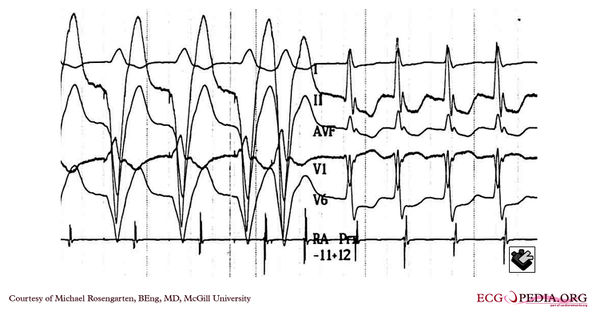McGill Case 53: Difference between revisions
Jump to navigation
Jump to search
No edit summary |
No edit summary |
||
| Line 13: | Line 13: | ||
The short-long interval between the initiating beat and the first QRS of the tachycardia is similar to that of the spontaneous tracing. The long interval suggest conduction down a slow anterograde pathway which is typical of AVNRT.]] | The short-long interval between the initiating beat and the first QRS of the tachycardia is similar to that of the spontaneous tracing. The long interval suggest conduction down a slow anterograde pathway which is typical of AVNRT.]] | ||
[[File: | [[File:E0007533.jpg|thumb|600px|left|This is a tracing with four surface leads and one intracavitary right atrial (RA) recording. The tracing began when the patient was in AVNRT. The rate of the tachycardia was 135/min . This rate is slower that the patient's initial rate. This may be due to the effect of digitalis. The digitalis could also explain the large ST segment changes, or these could be due to the tachycardia itself or ischemia. | ||
Note the ventricular pacing train is interrupted by a premature spontaneous or reentrant ventricular complex which fails to conduct in the retrograde direction and results in termination of the arrhythmia.]] | Note the ventricular pacing train is interrupted by a premature spontaneous or reentrant ventricular complex which fails to conduct in the retrograde direction and results in termination of the arrhythmia.]] | ||
Latest revision as of 08:34, 13 February 2012

|


